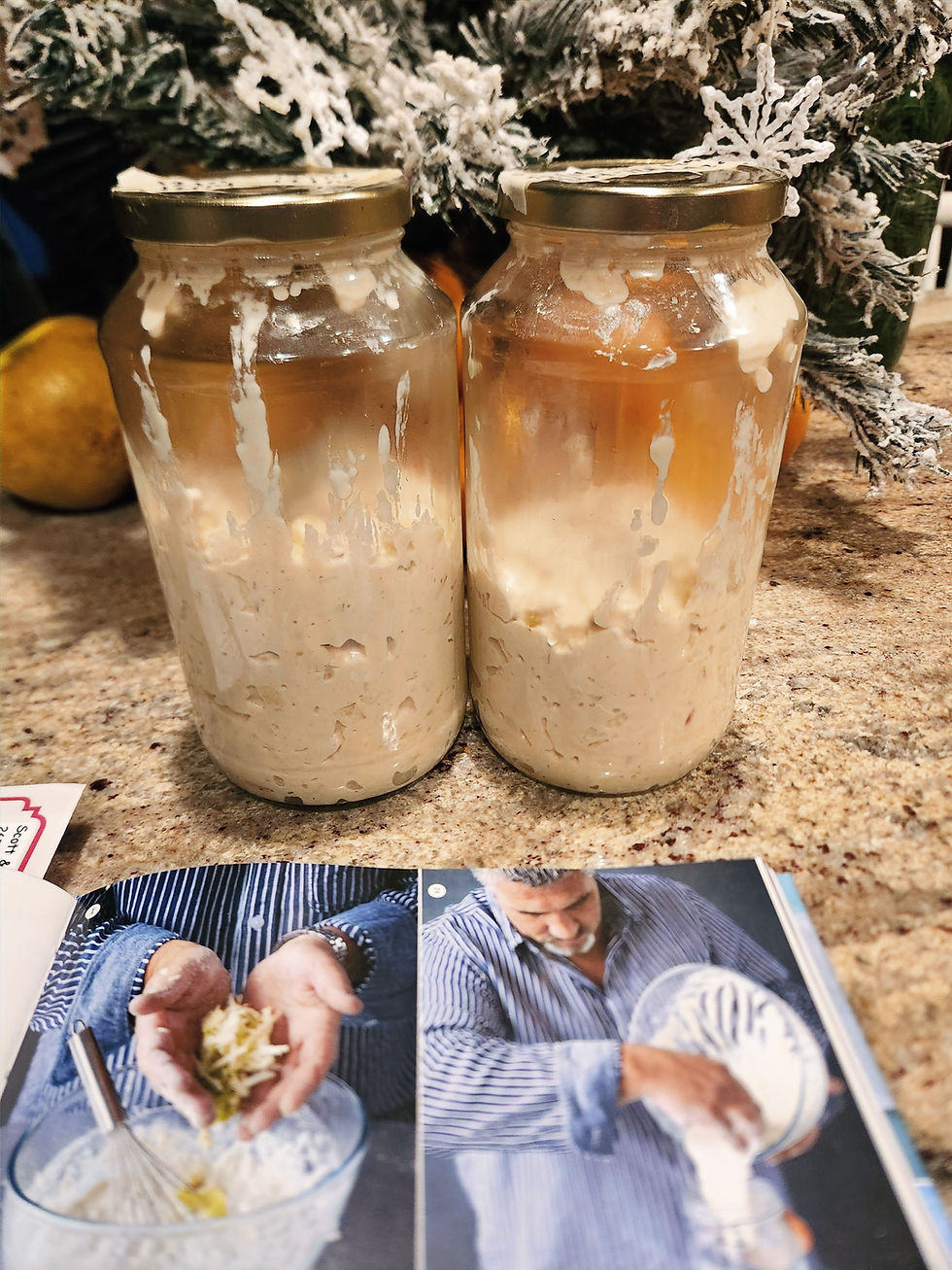Baking My Way Through Paul Hollywood's "How to Bake" - Nineteen: Apple and Cheddar Sourdough
- jordanswellness

- Mar 13, 2024
- 3 min read
My personal challenge: baking my way through "How to Bake". This post is my experience baking and learning new skills from tackling each recipe in Paul Hollywood's, "How to Bake". I will also document any recipe changes that I made - mainly as a result of not having the ingredients on hand (i.e., we never have regular sugar in the house) - and how the recipe fared. I will not be providing the recipes that are in his book.
I can't believe that I baked two recipes of sourdough in one day AND it was my first ever attempt at sourdough baking. Now, if that doesn't speak to a lesson right away, I don't know what else to say. Keep it simple in the kitchen and learn new skills slowly - bake one sourdough at a time until it becomes a routine dance and muscle memory. If this is your first or many attempts at sourdough, here are some of the lessons I learned when attempting my first or two sourdoughs!

Like I said in the other post about Spitfire Sourdough, I made this sourdough together with another sourdough recipe - the Spitfire Sourdough. I would definitely recommend baking one at a time, especially if you are new to the sourdough world so that you can give yourself time to make mistakes, learn from your mistakes, and hone in on the perfect starter recipe. Alas, I not only baked two sourdough recipes, but I also used ALL of my sourdough starter. Despite that mistake, keep reading below for more learning lessons from my experience with baking the Apple Cheddar from "How to Bake".
Here are some of the lessons that I learned while making the Apple and Cheddar Sourdough from "How to Bake":
Honestly, this list is all about why our Apple Cheddar Sourdough became so dense it looked like someone sat on top of the loaf after baking and how to prevent that issue next time. If you are anything like me or have experienced overly dense sourdough, then this post might help you!
Overproofing: If the dough was allowed to ferment for too long during the final proofing stage, it could have become overproofed. Overproofed dough loses its ability to trap gas produced by yeast, resulting in a dense, heavy loaf. To prevent this, monitor the dough closely during proofing and look for signs of fermentation, such as increased volume and a slightly domed shape. Consider reducing the proofing time or adjusting the fermentation temperature to slow down the process if necessary. To prevent in the future: Monitor proofing closely and adjust the time or temperature as needed to prevent overproofing.
Insufficient Gluten Development: Proper gluten development is crucial for creating a light and airy crumb in sourdough bread. If the dough was not kneaded enough or if the gluten structure was not adequately developed during mixing, it could lead to a dense texture. To address this, ensure thorough kneading or mixing of the dough until it reaches the proper gluten development stage. Additionally, consider using high-protein flour or incorporating stretch and folds during bulk fermentation to strengthen the gluten network. To prevent in the future: Ensure thorough gluten development through proper kneading or mixing techniques.
Incorrect Baking Temperature or Time: Baking sourdough bread at too low a temperature or for too short a time can result in a dense crumb. The bread may not fully expand and set during baking, leading to a heavy texture. To avoid this, preheat your oven adequately and use a baking temperature that allows the bread to rise and develop a golden crust evenly. Additionally, follow the recommended baking time closely, but be prepared to adjust based on visual cues such as color and internal temperature. To prevent in the future: Bake the bread at the correct temperature for the recommended time, making any necessary adjustments based on visual cues.
Our Review: Our Apple Cheddar Sourdough was definitely dense and tighter in structure than a perfectly baked sourdough, but my husband was a trooper and ate several slices before we sliced it up and chucked it into the freezer. To be honest, I have not reached for the Apple Cheddar Sourdough and even if it is the last bread we have in the freezer, I might just opt to make something fresh before finishing off that loaf. Now, the flavor of apple and cheddar was delicious and I think that is why my husband ate so many slices, but I would not say the texture was a win. I think Paul Hollywood would say that it was "a bit stodgy". So to you, good luck!
On that note, I hope that you find a recipe book you enjoy, or this one, that I am currently baking my way through. Either way, enjoy baking and nourishing yourself and your family.
All my light and all my love.
Namaste,
Jordan











Comments